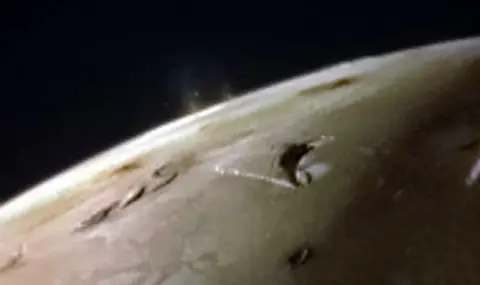The Italian instrument Juno Jovian Infrared Auroral Mapper (JIRAM) on the Juno probe has become a valuable tool for studying on Jupiter's moon Io. Io is the most volcanically active body in the Solar System, with hundreds of volcanoes. Juno's close flybys allow us to see the lava lakes up close and study their overall structure, providing insight into the processes in the bowels of this Jupiter moon.
Scientists are just now starting to sort through the data collected by NASA's probe's close flybys of Io last year. The first work on this data was published a few days ago in the journal Nature. The JIRAM instrument was developed to study Jupiter's atmosphere to a depth of 70 km below the giant planet's cloud cover. But it has also become an excellent tool for studying Jupiter's moons, the most impressive of which is Io.
Based on JIRAM data on lava lakes found on Io, these formations on the satellite are numerous and quite local. The magma does not flow over the edges of the caldera, from which the scientists conclude that the walls of the crater are quite high - up to several hundred meters.
An interesting and not fully understood characteristic of Io's lava lakes is the distinct absence of solidified magmatic crust at their edges. This indicates the likely circulation of magma from the center to the edges and deep into the craters, or conditions at the edges where the hardened crust breaks off at the rim. This gives some clues about the behavior of the magma in the depths of Io, but they are not enough to draw a final conclusion.
Scientists continue to receive data about Io. Juno made its 62nd flyby of Jupiter on June 13. It passed over the Moon at an altitude of 29,250 km. The probe will make its 63rd flyby of Jupiter and Io on July 16. The device was able to pass over the north and south poles of the satellite, which will allow for the first time to obtain data on Io's volcanic activity in the circumpolar regions.

